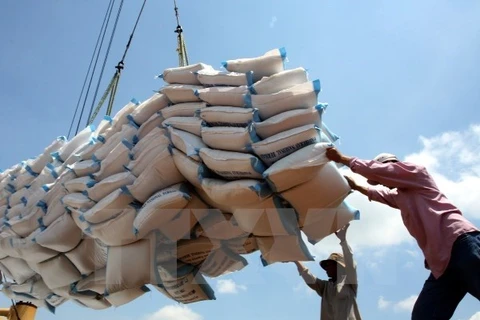Improving quality and building a national brand name for Vietnamese rice is essential to securing a firm foothold in the international market, experts have commented.
Vietnam is facing increasingly fierce competition from potential foreign rivals, including Cambodia, Myanmar and the US. Pressure lies in not only pricing but also quality and branding, according to Deputy Director of Tien Giang food company Le Thanh Khiem.
Khiem said Vietnam is the world’s third biggest rice exporter but its rice value remains modest, adding that besides traditional markets like the Philippines and Indonesia, the country should move towards choosy ones such as Europe and Japan by shifting attention to quality rather than quantity.
Additionally the country should select stable and long-term rice varieties, since most of the current options are produced over a short term and quickly degrade, he added.
Director of the Vietnam Institute for Economic and Policy Research under the Vietnam National University Nguyen Duc Thanh said concentrating on easy markets will make Vietnamese rice products reduce quality standards in production and exports, resulting in the dwindling competitive edge in the global market.
Particularly, when the free trade agreement with the EU and the Trans-Pacific Partnership agreement come into effect, the rice sector will have little motivation to adjust its quality to obtain the pacts’ opportunities, he stressed.
Deputy Minister of Industry and Trade Tran Tuan Anh suggested focusing on restructuring, improving quality and building a national brand name to avoid negative impacts when import demand declines.
The Prime Minister has approved a project developing brand names for Vietnamese rice through 2020 and with a vision towards 2030.
Under the project, about 20 percent of local export rice is expected to have national brand names and enter the global supply chain by 2020, increasing to 50 percent by 2030.
According to the Ministry of Agriculture and Rural Development, rice demand in Vietnam’s traditional markets is showing positive recovery signs, demonstrated by the country’s winning of the bids to supply 450,000 tonnes of rice to the Philippines and around 1 million tonnes to Indonesia.
However, rice prices are forecast to decrease slightly after the first quarter of 2016, which will require adjustments in production structure to meet the increasing demand, said Deputy Minister Ha Cong Tuan.
The International Monetary Fund forecasts average rice prices in 2016 will decline by 13 percent over the previous year and the World Bank anticipates a downward trend of 2-3 percent in the following years.-VNA
























